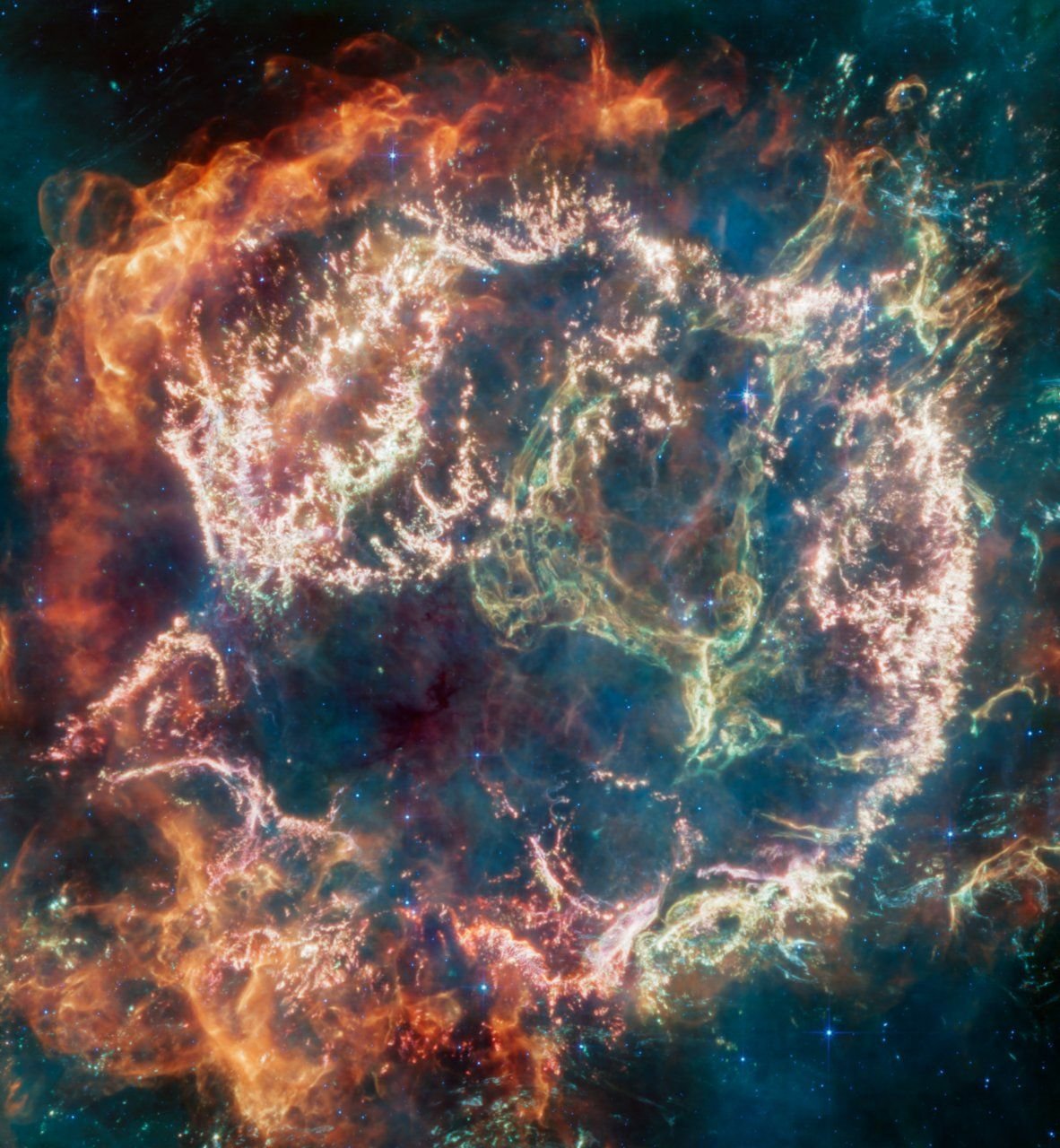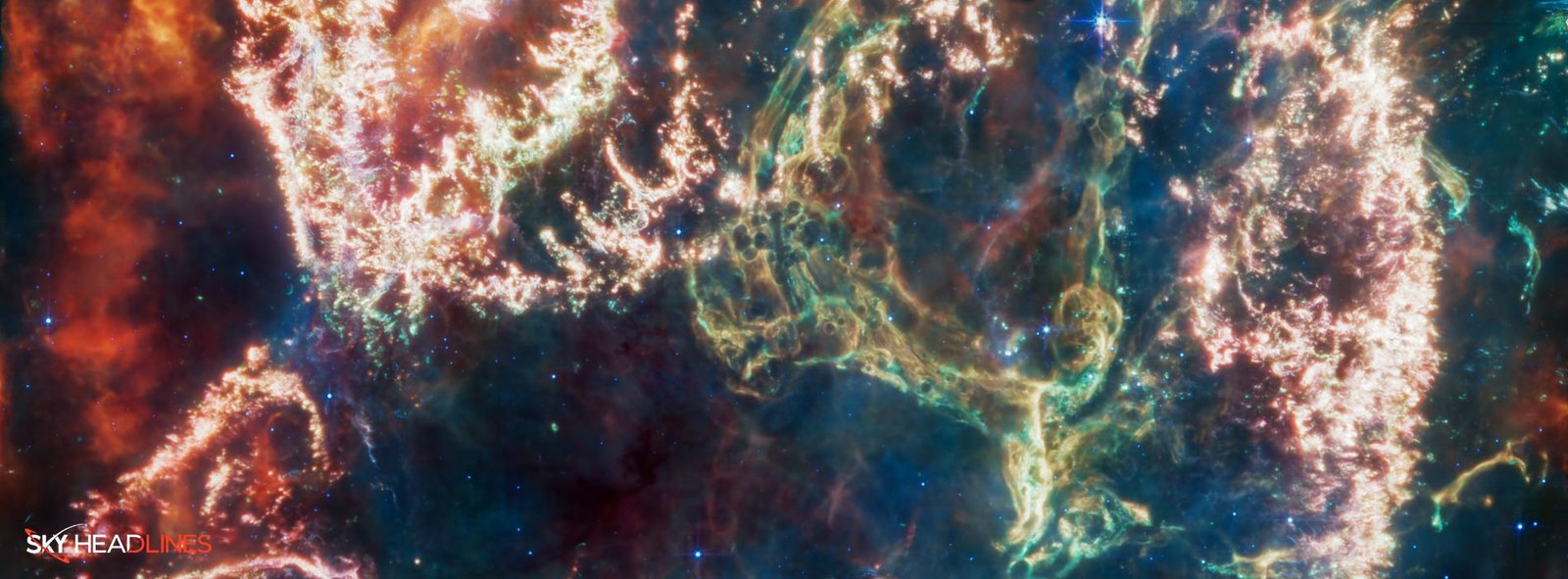Astronomers have captured an image of Cassiopeia A, the remaining debris of a supernova explosion of a colossal star in our Milky Way, through the James Webb Space Telescope. The image exhibits vibrant hues and intricate formations, providing an opportunity for astrophysical investigations to understand the star’s demise. Moreover, by studying the composition of the dust in Cas A, researchers aim to better comprehend the origins of planetary components and human existence, shedding light on the source of cosmic dust in the early universe. As supernovae distribute essential elements throughout interstellar space, they are vital for the formation of new stars and planets and the existence of life in the universe.
The picture exhibits striking hues and elaborate formations that pique curiosity for a closer look. Additionally, Cassiopeia A represents the most youthful remaining debris of a colossal star explosion within our Milky Way. This presents a chance for astronomers to conduct astrophysical investigations and comprehend the star’s demise.

First, we should know,
What is Cassiopeia A?
Cassiopeia A is a typical supernova remnant that has been extensively researched by numerous ground-based and space-based observatories. Additionally, by integrating observations from various wavelengths, researchers can gain a more complete comprehension of the remnant.
According to Danny Milisavljevic, who is the principal investigator of the Webb program that captured these observations, Cas A provides us with the most promising chance to examine the remains of a supernova and conduct a type of post-mortem analysis to determine the type of star that existed before the explosion and how it occurred. Danny Milisavljevic is affiliated with Purdue University in West Lafayette, Indiana.
The vibrant hues displayed in the recently captured image of Cassiopeia A are a result of translating infrared light into visible wavelengths. Consequently, this image is a treasure trove of scientific knowledge that researchers are only just beginning to uncover. Moreover, the outer region of the bubble exhibits striking orange and red curtains of matter, which stem from warm dust emissions. Specifically, this area marks where the material ejected from the star explosion collides with the gas and dust surrounding it.
Inside the external covering are speckled threads of vivid pink adorned with clusters and lumps. This indicates the substance that originates from the star and radiates due to a combination of different dense elements, such as oxygen, argon, and neon, along with dust discharge. The materials from the star can also be perceived as dimmer strands in the vicinity of the hollow interior.
Lastly, let’s find out,
Origin of Cosmic Dust through Cas A Study:
One of the potential scientific inquiries that Cassiopeia A could provide insight into is the source of cosmic dust. Scientific observations have revealed that even newly formed galaxies in the early universe contain significant amounts of dust. Therefore, considering supernovae is necessary to easily explain the origins of this dust, as they emit substantial amounts of heavy elements into the cosmos, which form the basis of dust.
Danny Milisavljevic is enthusiastic about the scientific potential of the data set captured by the James Webb Space Telescope. The data set is of the supernova remnant Cassiopeia A. According to him, studying the process of exploding stars and the remnants they leave behind can help us better understand the origins of the universe. It can also help us understand the elements that make up our planet and life. Consequently, he intends to spend the rest of his career working to understand the information contained in the data set.
The amount of dust detected in early galaxies through observations of supernovae remains inconclusively explained. Therefore, astronomers are using the Webb telescope to study Cas A to comprehend its dust composition better. This information can potentially enhance our understanding of the origin of planetary components and human existence.
The formation of Cassiopeia A through a supernova event is of great importance for the existence of life in our universe. This is because such explosions are responsible for distributing essential elements, including calcium and iron, which are vital building blocks for life, throughout the vast expanse of interstellar space. New stars and planets form in this way, giving rise to future generations of life.





